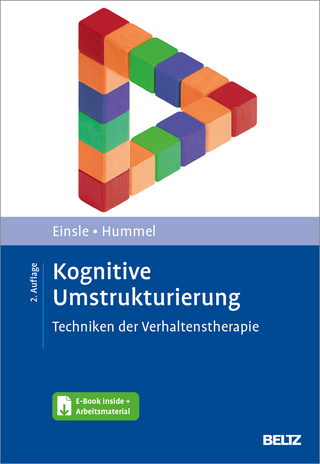
SPSS Explained
Routledge (Verlag)
978-0-367-36698-8 (ISBN)
regular advice boxes with tips specific to each test
explanations divided into ‘essential’ and ‘advanced’ sections to suit readers at different levels
frequently asked questions at the end of each chapter
The third edition of this popular book has been fully updated for IBM SPSS version 27 and also includes:
a new chapter on how to undertake mediation and moderation with SPSS
updates on changes to SPSS, including updated functionality within ANOVAs and calculations of a priori power analysis
Presented in full colour and with a fresh, reader-friendly layout, this fully updated new edition also comes with online support material featuring an array of supplementary resources for students and instructors.
Minimal prior knowledge is assumed, so the book is well designed for the novice user, but it will also be a useful reference source for those developing their own expertise in SPSS. It is suitable for all students who need to do statistical analysis using SPSS in various disciplines, including psychology, social science, business studies, nursing, education, health and sport science, communication and media, geography, and biology.
The authors have many years of experience in teaching SPSS to students from a wide range of disciplines. Their understanding of SPSS users’ concerns, as well as a knowledge of the type of questions students ask, form the foundation of this book.
Perry R. Hinton is a cultural psychologist and a professor of applied linguistics at the University of Warwick, UK. He has taught in the areas of cognitive, social, and cultural psychology, to a wide range of students in psychology, linguistics, communication and media, education, philosophy, nursing, and social work. He is the author of Statistics Explained, also published by Routledge. Isabella McMurray is a Principal lecturer in psychology at the University of Bedfordshire, UK. She has taught in a range of areas, primarily within psychology, including developmental psychology, and qualitative and quantitative research methods and analysis. She undertakes consultancy, training, and research with local authorities and charities, including working with social workers, probation services, education services, and road safety teams. Charlotte Brownlow is a professor of psychology at the University of Southern Queensland, Australia. She has taught in a range of areas, primarily within psychology, including developmental and social psychology and qualitative and quantitative research methods. Peter C. Terry is Dean of the Graduate Research School and a professor of psychology at the University of Southern Queensland, Australia. He has taught mainly in the areas of sport and exercise psychology, psychometrics, and statistics. He has provided psychological support at nine Olympic Games and more than 100 other international events.
1. Introduction
2. Data entry
3. Descriptive statistics
4. Illustrative statistics
5. Introduction to statistical testing
6. t tests
7. Introduction to analysis of variance (general linear model)
8. One-factor analysis of variance
9. Two-factor analysis of variance
10. Introduction to multivariate analysis of variance
11. Nonparametric two sample tests
12. Nonparametric k sample tests
13. Chi-square test of independence and goodness of fit test
14. Linear correlation and regression
15. Multiple regression and multiple correlation
16. Moderation and mediation
17. Introduction to factor analysis
18. Using SPSS to analyse questionnaires: reliability
18. Using SPSS to analyse questionnaires: reliability
| Erscheinungsdatum | 14.09.2023 |
|---|---|
| Zusatzinfo | 146 Tables, black and white; 50 Line drawings, color; 328 Halftones, color; 378 Illustrations, color |
| Verlagsort | London |
| Sprache | englisch |
| Maße | 189 x 246 mm |
| Gewicht | 870 g |
| Themenwelt | Geisteswissenschaften ► Psychologie ► Allgemeine Psychologie |
| Mathematik / Informatik ► Mathematik | |
| ISBN-10 | 0-367-36698-3 / 0367366983 |
| ISBN-13 | 978-0-367-36698-8 / 9780367366988 |
| Zustand | Neuware |
| Haben Sie eine Frage zum Produkt? |
aus dem Bereich


